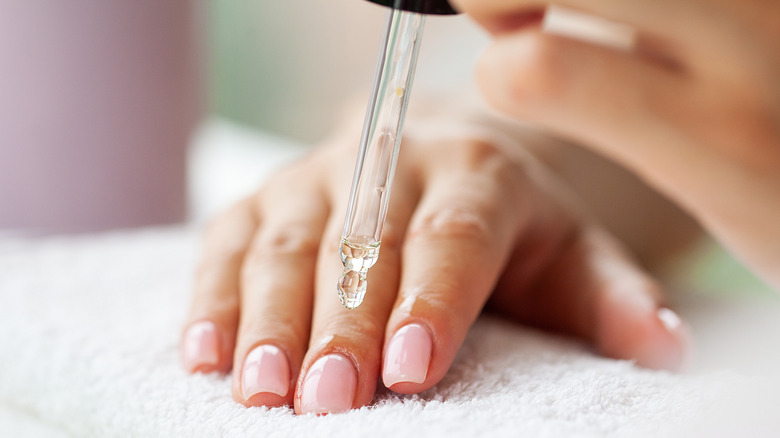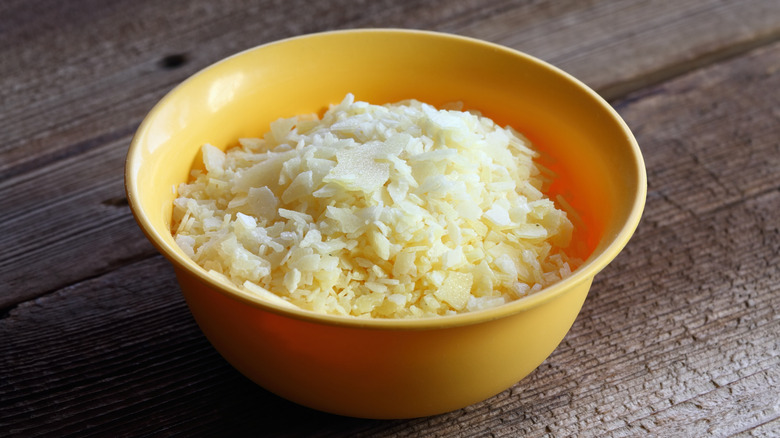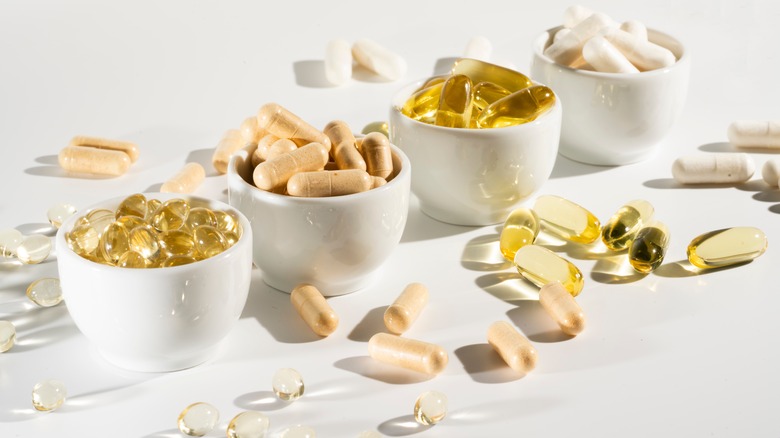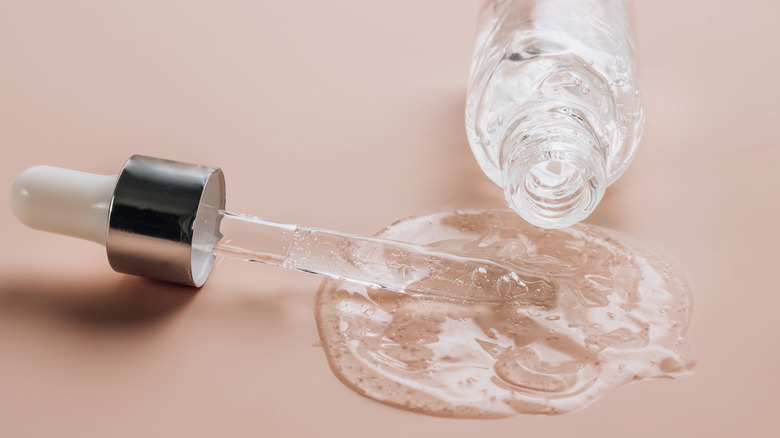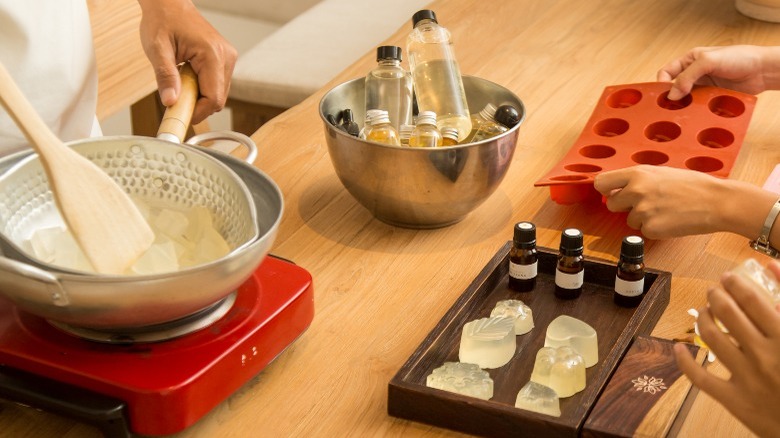6 Derm-Approved Cuticle Oil Alternatives
We may receive a commission on purchases made from links.
Taking care of your nails should always include cuticle care. A cuticle is the layer of skin on the bottom of the nail bed that's just above the proximal nail fold, and it has a vital role in keeping your nails healthy. "[The] nail grows from under the proximal nail fold. [The] cuticle seals and protects the root of nails from water and irritants," dermatologist Aanchal Panth, MD, explained in a post on her Instagram account.
While some think it's aesthetically more pleasing to remove cuticles, you might want to ask your nail tech to skip cuticle cutting during your next manicure. Panth advises keeping cuticles intact, as "water can seep into the nail folds and cause changes to the nail plate" if they get damaged. Keeping your cuticles moisturized is also an important step in cuticle care, and while dry cuticles aren't dangerous for your health, they can lead to a nail infection.
Cuticle oils are often used to keep the delicate skin around the nails hydrated. However, you don't have to get cuticle oil specifically, as there are derm-approved alternatives. Plant-based oils such as avocado, coconut, almond, and argan oil are great for hydrating cuticles, as are vitamin E, lanolin, and hyaluronic acid. Another common cosmetic product ingredient that can also be used as a cuticle oil alternative because of its emollient properties is glycerin. So, next time you're out of cuticle oil, there's no need to rush to the store.
Plant-based oils aren't just for cooking
Coconut oil has multiple beauty uses, including cuticle moisturizing. "Coconut oil is great for treating brittle and cracked nails as well as damaged cuticles because of its moisturizing properties," board-certified dermatologist Orit Markowitz explained in a conversation with Byrdie. According to celebrity manicurist Skyy Hadley, you should rub coconut oil into your cuticles and leave it on for as long as possible to allow its saturated fats to fully absorb into the skin, which will soften your cuticles.
If you're out of coconut oil, avocado oil will also do the trick. "Avocado oil contains lipids and omega-3 fatty acids, which help moisturize your skin. It can help nourish and soften dry, cracked cuticles," board-certified dermatologist Joel Schlessinger tells LovelySkin.
Argan and almond oils can also be used as cuticle oil substitutes, so feel free to bust them out the next time you're out of your favorite cuticle care product. "Argan oil is unique in its composition, offering high amounts of oleic and linoleic acids, which makes it extremely rich and moisturizing," cosmetic chemist Krupa Koestline explained to Allure. Almond oil is another great kitchen staple to use as an alternative to cuticle oil because of its moisture-locking quality, according to dermatologist Corey L. Hartman, MD. "Almond oil is full of antioxidants like vitamins A and E, potassium, and zinc," he told Cosmopolitan, adding that it's hence commonly found in specialized nail products.
Lanolin locks in moisture
Lanolin is naturally produced by sheep's sebaceous glands to keep their wool moisturized and protected, which is similar to human production of sebum. Lanolin has the ability to lock in moisture and prevent the skin from losing water, according to a study published by Clinical Medicine & Research. Because of its hydrating properties, lanolin is classified as an emollient, meaning that it soothes the skin by forming a film over its top layer, as per the Cleveland Clinic.
Lanolin is often found in various cosmetic products such as moisturizers and soaps, and it's also a dermatologist-approved cuticle oil alternative, says board-certified dermatologist Onyeka Obioha, MD. "The emollient lanolin assists in the natural, smooth regrowth of nails," she shared in a conversation with Byrdie, adding that using lanolin will prevent your skin and nails from drying out. While you most likely won't be using pure lanolin, cosmetic products containing it will do the job. Dermatologist Cynthia Bailey, MD, recommends moisturizing your cuticles with the Bag Balm Ointment, which has a lanolin base, as well as with Cutemol, the emollient skin cream formulated for very dry skin, as she shared on her blog, Dr. Bailey Skincare.
Massage the lanolin product into your cuticles and don't wash it off. Lanolin is safe for everyday use on the hands, but before using it for the first time, make sure you're not allergic to the emollient by patch-testing it. If you're allergic to wool, you're also probably allergic to lanolin.
Skip cuticle oils and go straight to a vitamin E source
Many cuticle oil brands already contain vitamin E, but you can skip the specialized products and go straight to the hydrating source. Vitamin E is "a hydrating and skin-comforting antioxidant," celebrity aesthetician Renée Rouleau shared in a conversation with Women's Health. The antioxidant is also classified as an emollient, which is why it's a great cuticle oil substitute loved by dermatologists.
Board-certified dermatologist Rina Weimann, MD, recommends using vitamin E to soften the cuticles and rehydrate the skin surrounding the nails (via Byrdie). Rouleau loves it because the emollient also works to strengthen your skin's protective barrier, as per Women's Health. Vitamin E oil has surprising effects on your skin, and you can also use it for cuticle care. The Organic Vitamin E Oil by RejuveNaturals as well as Cliganic's 100% Pure Vitamin E Oil are great readily available options. If you seriously want to cut all middlemen out, you can use vitamin E capsules and open them for an on-the-go solution for dry cuticles. Deva's Vitamin E capsules and the Dry-E capsules by Bluebonnet are affordable options that are more budget-friendly than some cuticle oils.
As vitamin E has a recommended daily dose of 15 milligrams for the average adult, as reported by the NIH, make sure you're not exceeding it if you're using vitamin E capsules for your cuticles. If you're already orally ingesting vitamin E, check with your doctor to see if it's safe to use it topically too.
Hyaluronic acid softens the cuticles and strengthens the nails
Hyaluronic acid is a skincare staple ingredient that is often found in serums, moisturizers, and many other cosmetic products. If you're low on cuticle oil, hyaluronic acid is a great alternative to reach for that you may already have somewhere in your beauty supply.
"Hyaluronic acid binds with collagen and water molecules, which traps the acid in our skin and prevents it from evaporating into the air," dermatologist Lily Talakoub, MD, explained in a conversation with Harper's Bazaar. Lucky for us, it works just the same on the cuticles as it does on the face, according to Onyeka Obioha. "[Hyaluronic acid] effectively draws hydration into the cuticle and nail," she shared with Byrdie, adding that it's best to use it as often as possible for best results. Another perk of this derm-approved cuticle oil substitute is that it's super easy to apply, as it's not as sticky as the other alternatives mentioned.
Not only is it good for softening dry cuticles, but hyaluronic acid is great for boosting overall nail health as well. A study published in the journal Dermatology and Therapy showed that hyaluronic acid is effective in improving nail brittleness and weakness, as well as nail appearance. Nail plate roughness was reduced, and the overall nail strength was shown to be enhanced.
Glycerin draws moisture into deeper levels of the skin
Glycerin is a common soap ingredient, and for good reason. "Glycerin works as a humectant; it attracts moisture from the air into the top layer of skin, and due to its low molecular weight, it will continue to draw moisture to the deeper layers of the dermis," cosmetic scientist Rachael Polowyj explained to Byrdie.
Therefore, glycerin is a great way to moisturize your cuticles on a deeper level. Dermatologist Dendy Engelman, MD, says that products containing glycerin "are meant to support the skin barrier by covering the outside." In a conversation with Byrdie, he explained that "they prevent loss of water in the skin, which allows natural oils to nourish and repair."
You can always use readily available glycerin-based products such as Vaseline's Intensive Care Sensitive Skin Relief lotion or Cetaphil's Moisturizing Cream. For an easy DIY dry cuticle aid, simply add a few drops of glycerin to some water and apply the mixture to your cuticles and nails throughout the day. Glycerin is safe for daily use and will provide much-needed moisture to your fingertips.
